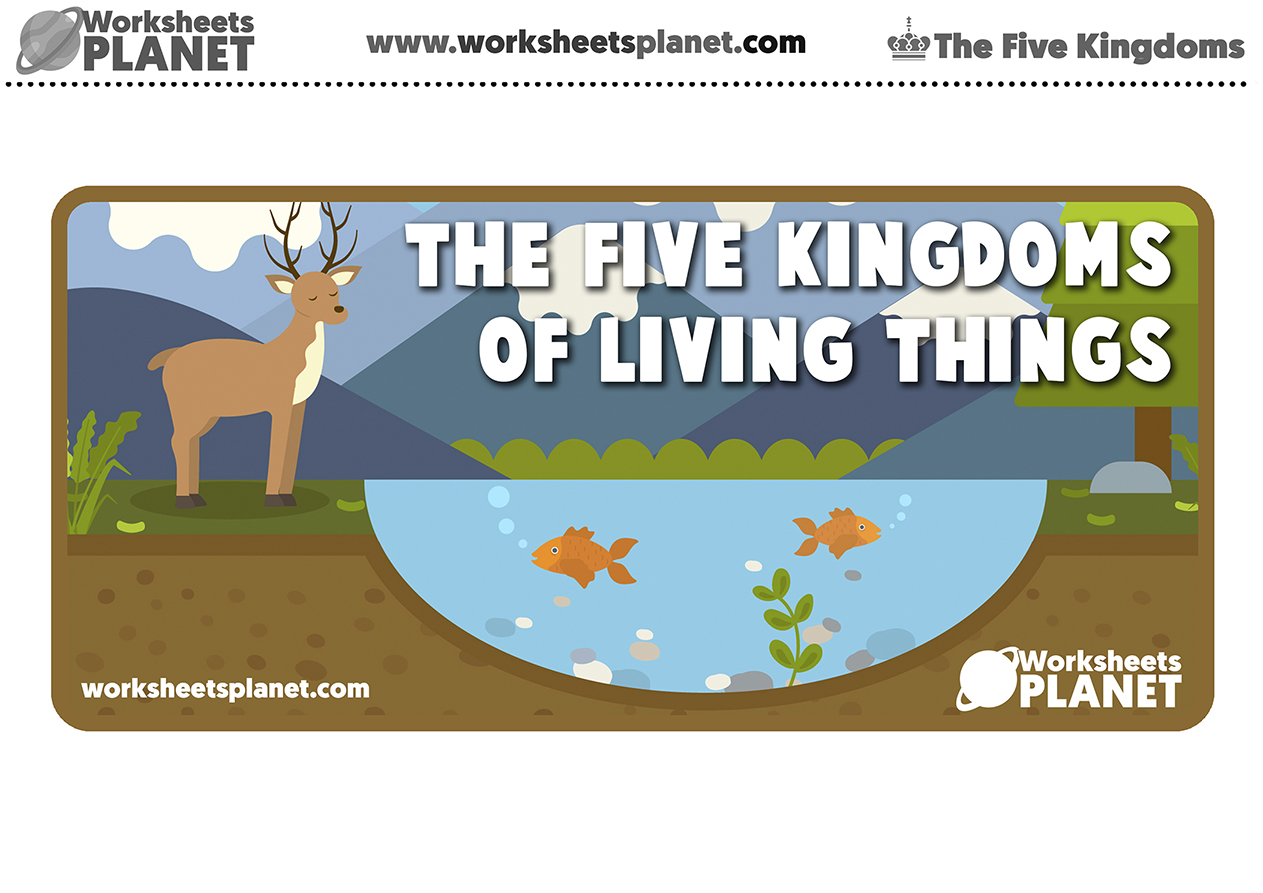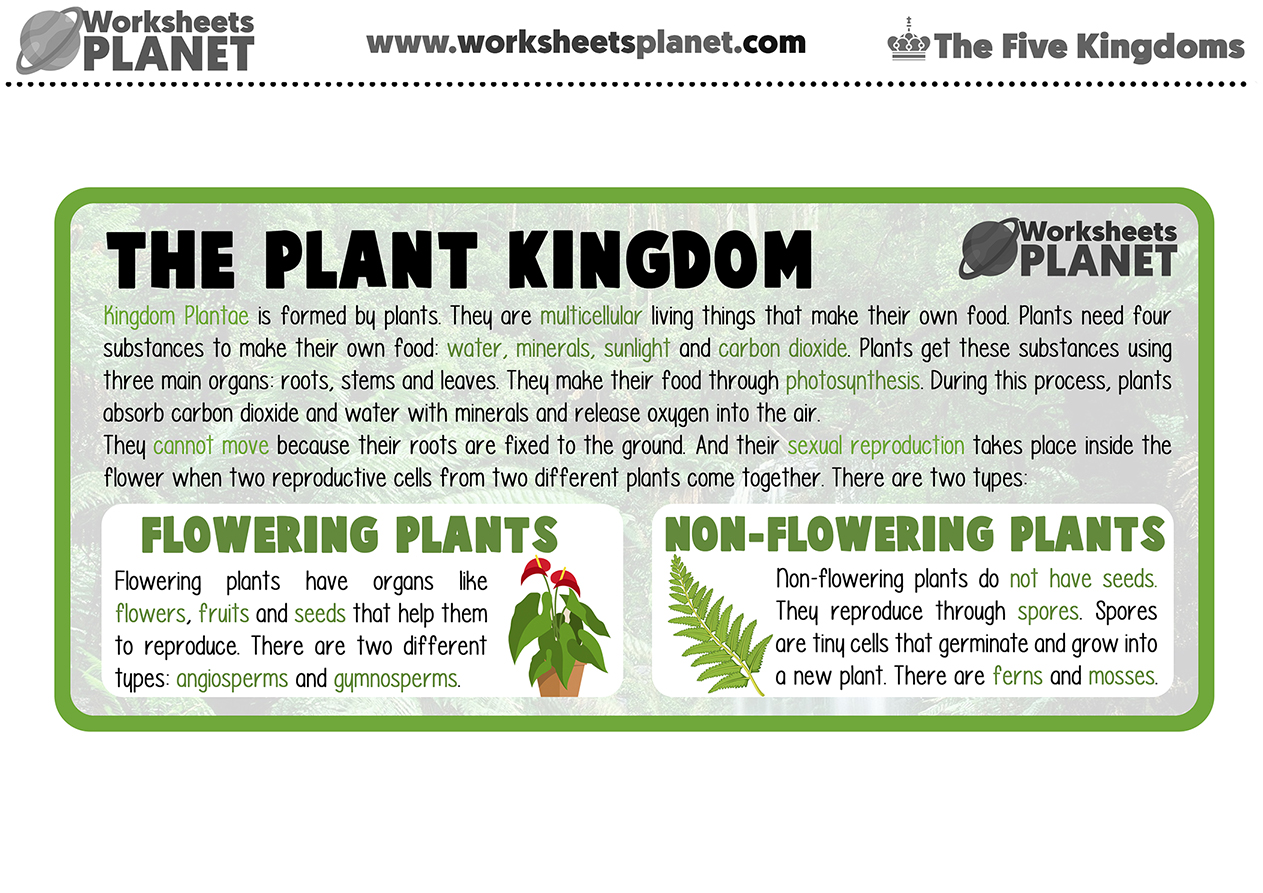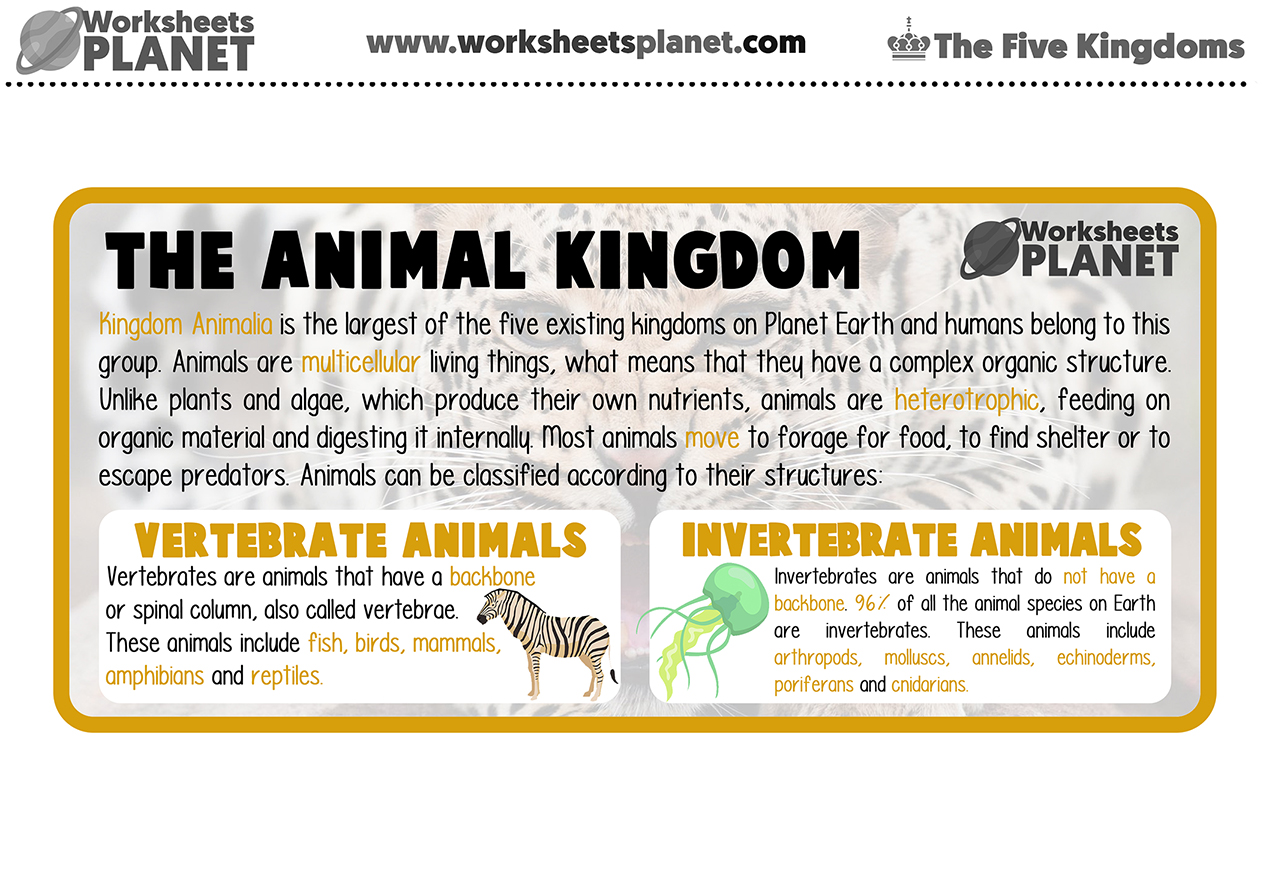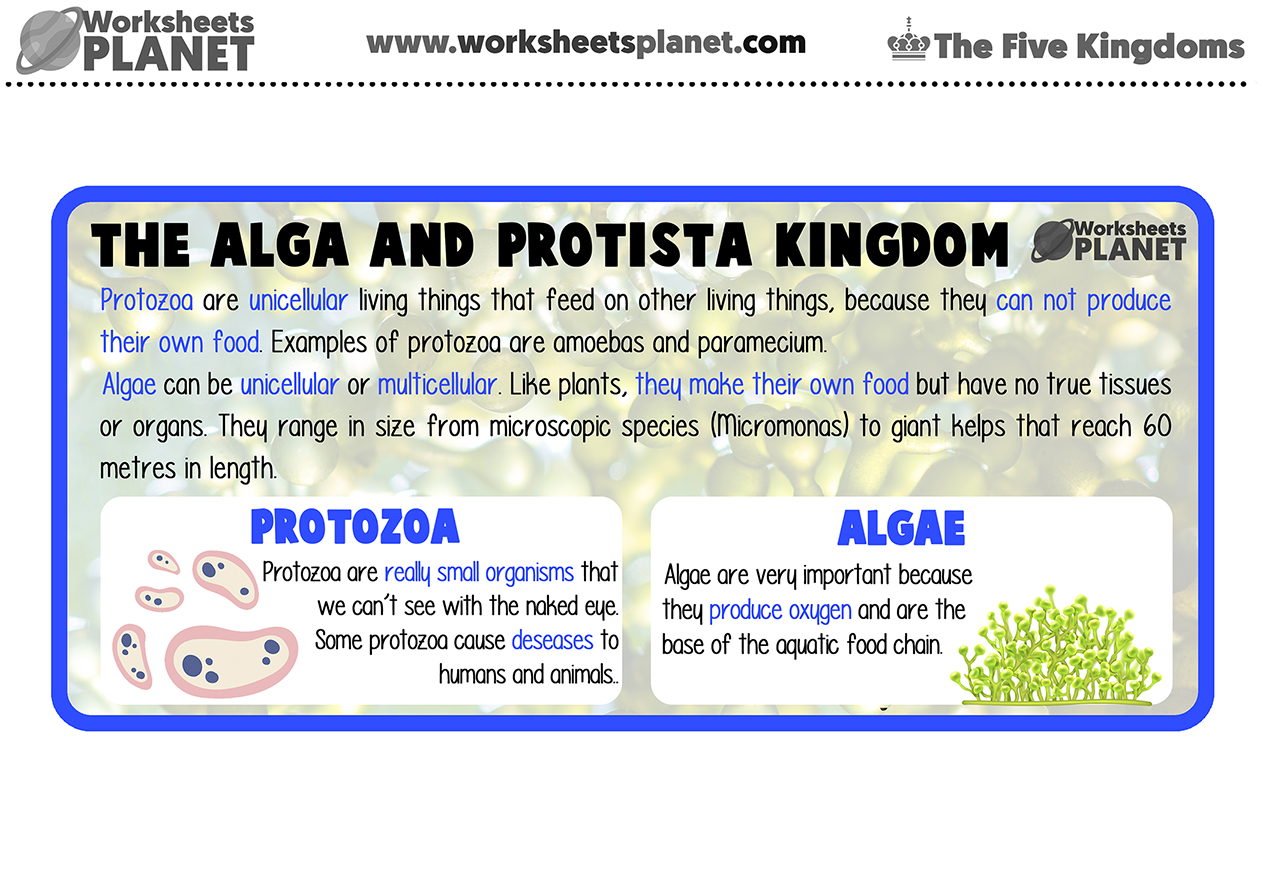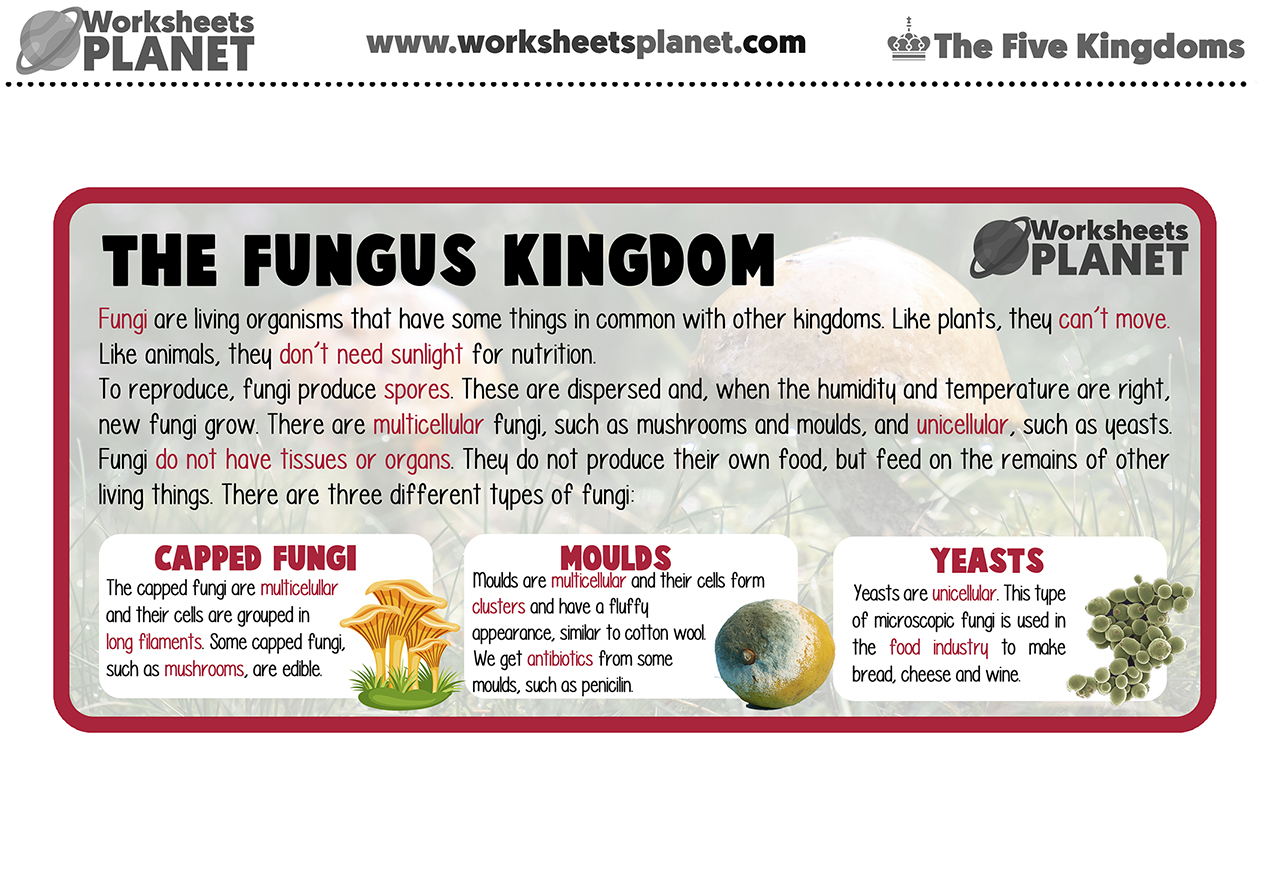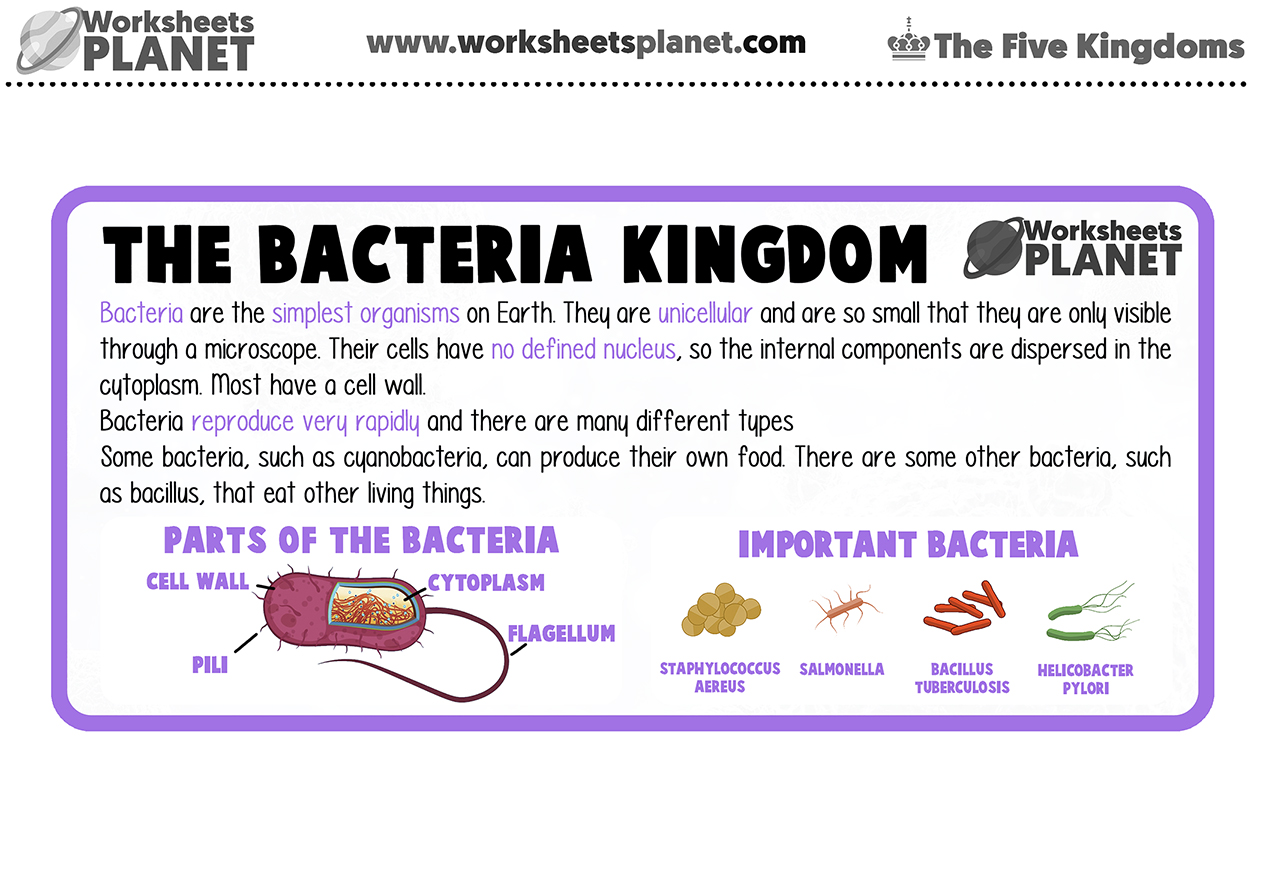Hey Science Teachers! If you are about to start teaching the origin of living things categories, here you have the perfect resource for you and your students. It is a keyring with the five kingdoms of living things, which are: animals, plants, bacteria, protozoo and algae and fungi. Every kingdom has its own characteristics and classification, so if you want your pupils to understand the differences among every kingdom and don’t get lost, you may use it.
All living organisms are classified into five main kingdoms. This classification is based on how they grow, what they eat, their reproduction method, and so on. These five kingdoms are then subdivided into smaller kingdoms. From unicellular organisms to multicellular organisms, each one is included in this five-kingdom system.
The Plant Kingdom:
The plant kingdom consists of all types of plants from petite flowers to majestic trees which convert barren lands into luxurious forests and gardens. The plant kingdom contains all the trees, plants, and herbs you see anywhere you go.
The organisms in the plant kingdom make their food through photosynthesis. They usually do not depend on other organisms for survival. They get most of the nutrients from the soil.
The plant kingdom is then subdivided into two types: flowering plants and non-flowering plants.
The Animal Kingdom:
Every animal you see, lizards, cats, dogs, and even humans, are part of the animal kingdom. The animal Kingdom survives on one basic instinct: Survival of The Fittest.
- Almost every animal from the animal kingdom needs some type of energy source from either the same Kingdom or from a different one to survive.
- The animal kingdom is divided into two main types: vertebrates and invertebrates.
The Alga and Protista Kingdom:
All living beings on Earth are made up of little cells that are indivisible. The humans themselves contain billions of cells. The Alga and Protista kingdom are the living beings that have only one cell. They are called unicellular organisms.
- Two main classifications of this Kingdom are protozoa and algae.
- They are small organisms that the human eye can’t see.
One of the most common examples of algae is what you see growing inside the water when it turns green. Algae is a vital organism because it produces oxygen.
The Fungus Kingdom:
Fungus kingdom is one of the unique kingdoms. They share similarities with other kingdoms, can’t move from their place like the plant kingdom and they depend on other living organisms for energy and nutrients like animal kingdom.
- Fungi utilizes its spores to reproduce and grow.
- These spores can survive toughest conditions and can reproduce when the humidity and temperature are just right.
The three main types of the fungus kingdom are capped fungi, mold, and yeast.
The Bacteria Kingdom:
The Bacteria Kingdom is like the necessary evil of all five kingdoms. There are good and bad type of bacteria in this kingdom.
- The bacteria Kingdom is made up of very simple cells and they are usually unicellular.
- Just like the animal kingdom, many of them grow by consuming nutrients from different sources.
- Some bacteria can even produce their own food.
Learning about these five kingdoms in school can help children understand the biology of living things. It will be helpful for them in the future.
Visual learning is very important in Primary Education because the children can absorb the information better. This keyring activity has different colours for every category, pictures that clarify the content, etc. what makes it very useful.
We recommend you to print it in DINA4 size and laminate it. Then you should use a keyring ring (we recommend plastic ones for kids) and put all the pages together. In case you don’t want to create a keyring but you are interested in the information you can print all the pages in DINA3 size and use them as classroom posters.
We hope you like and enjoy this free resource!

